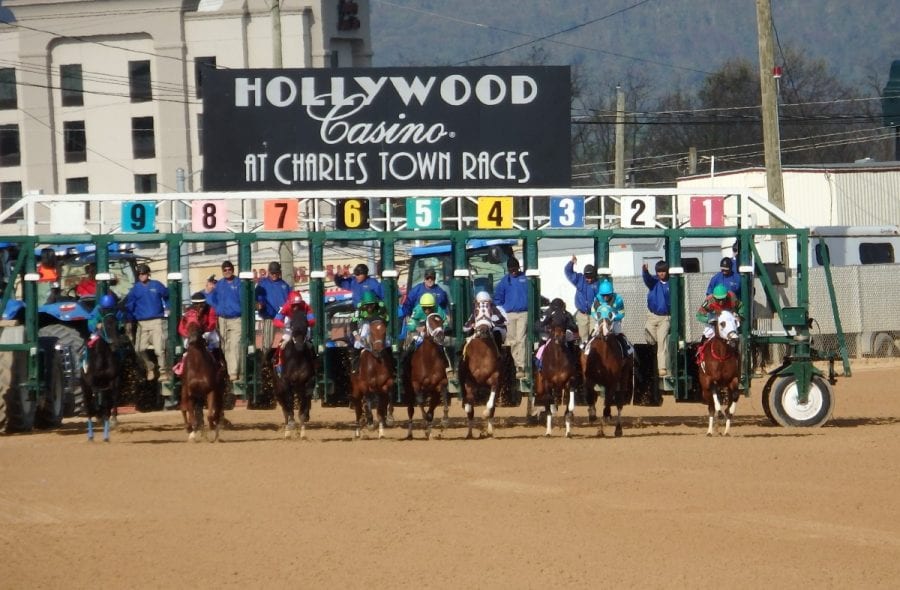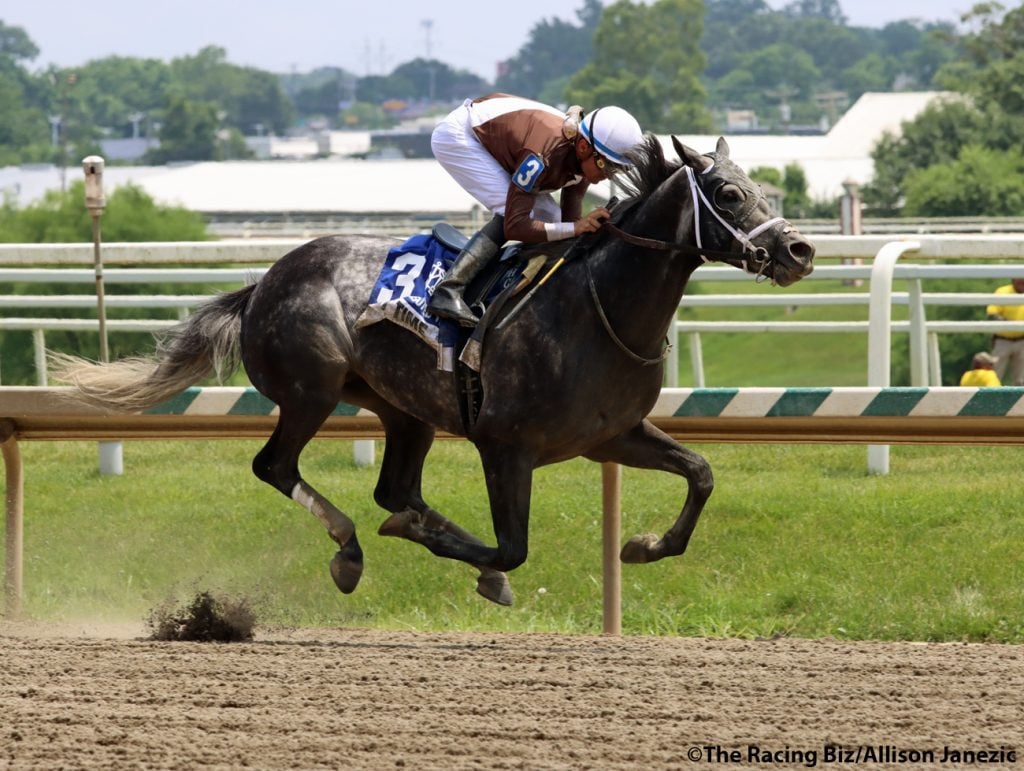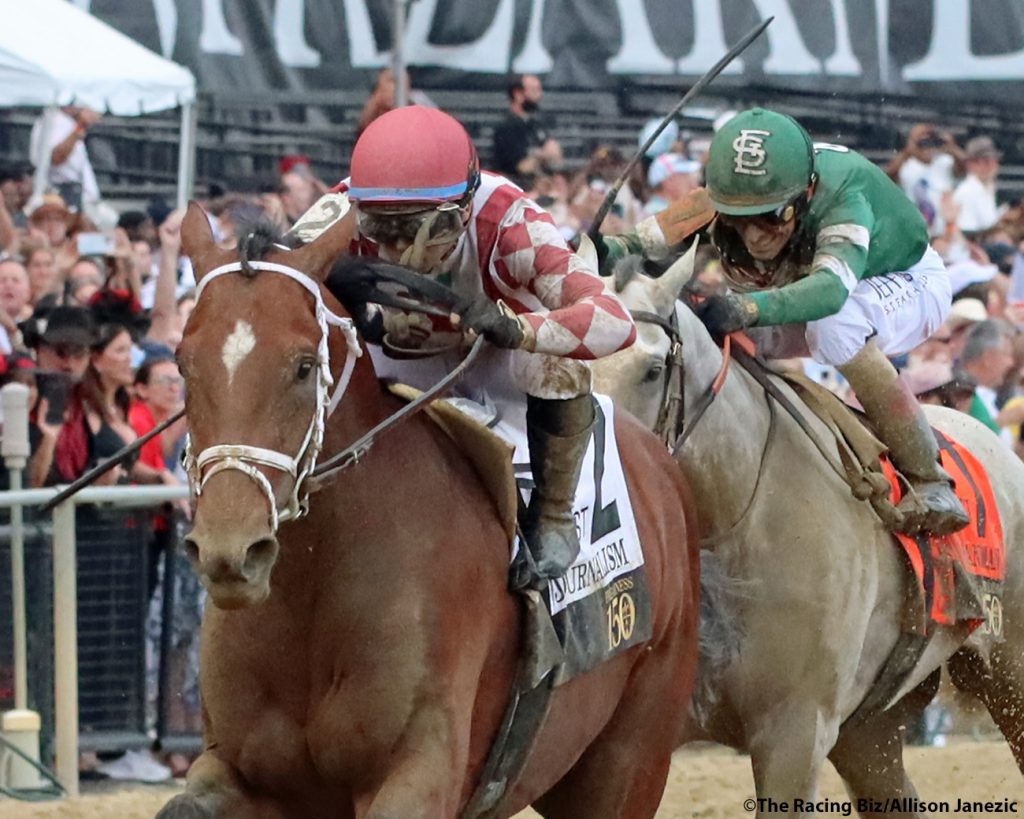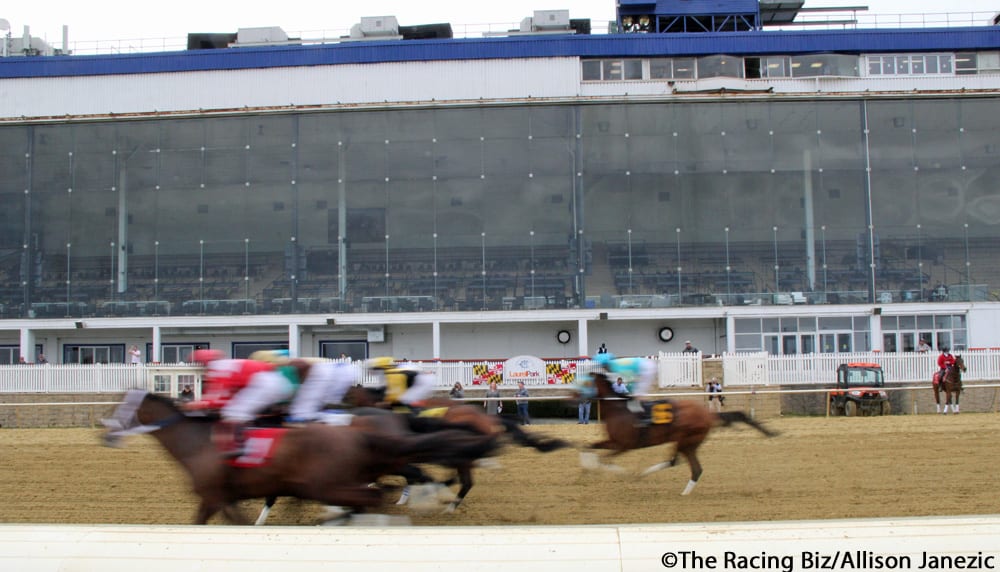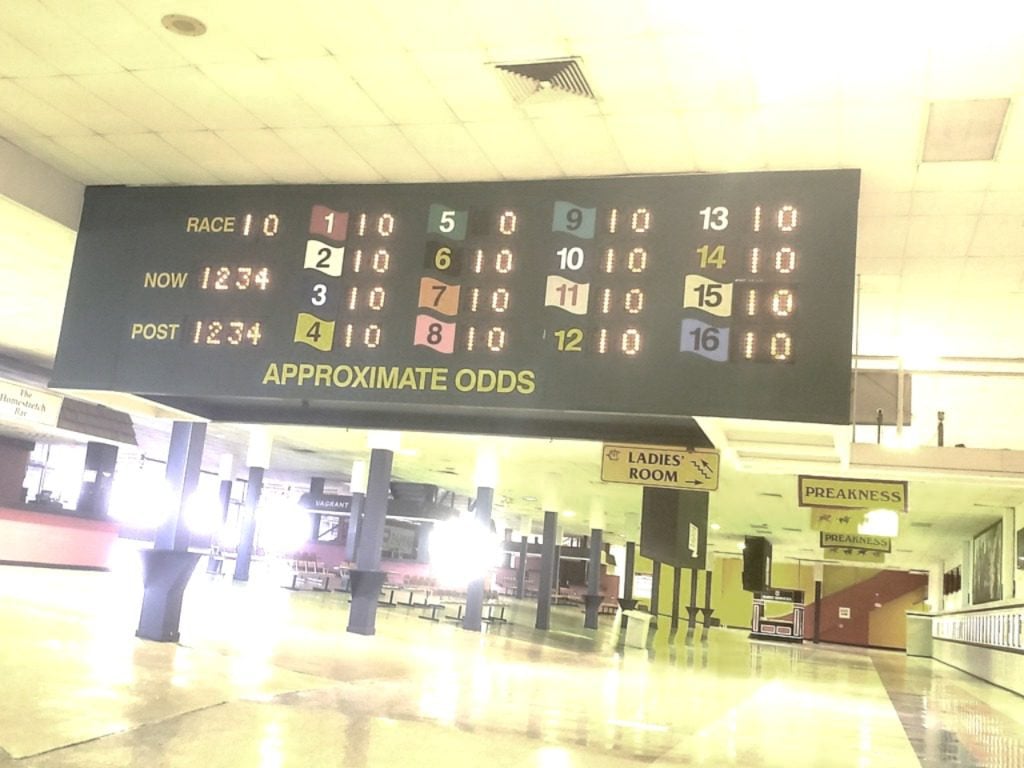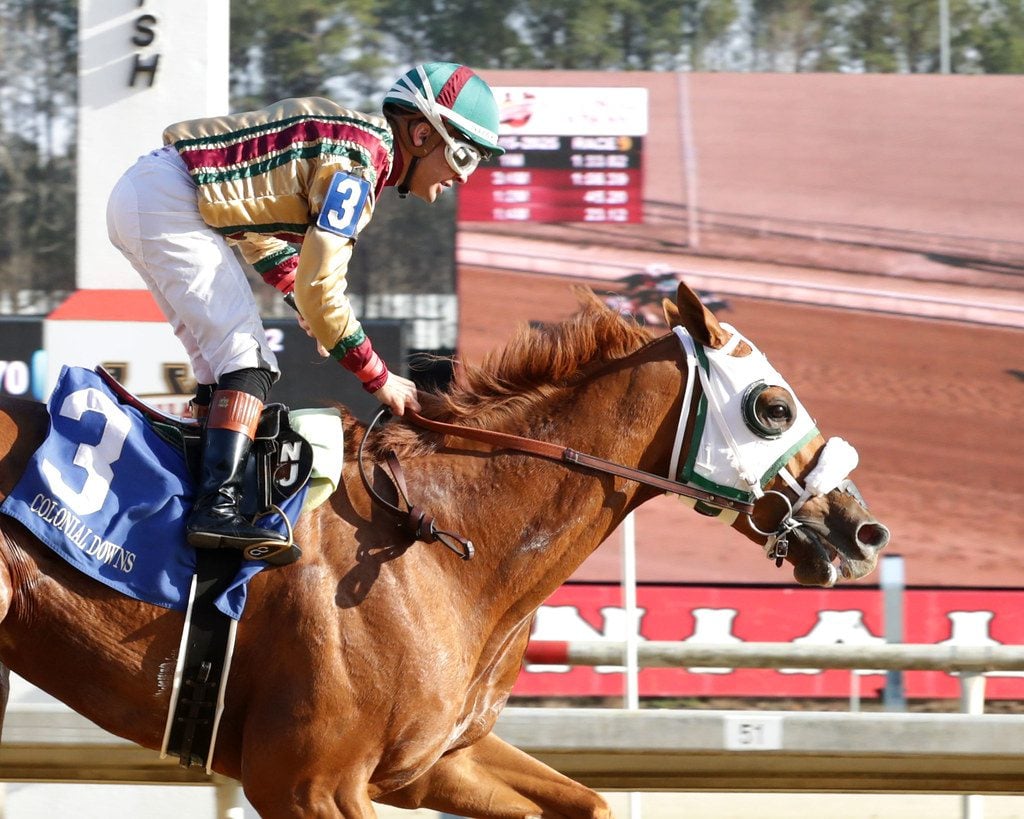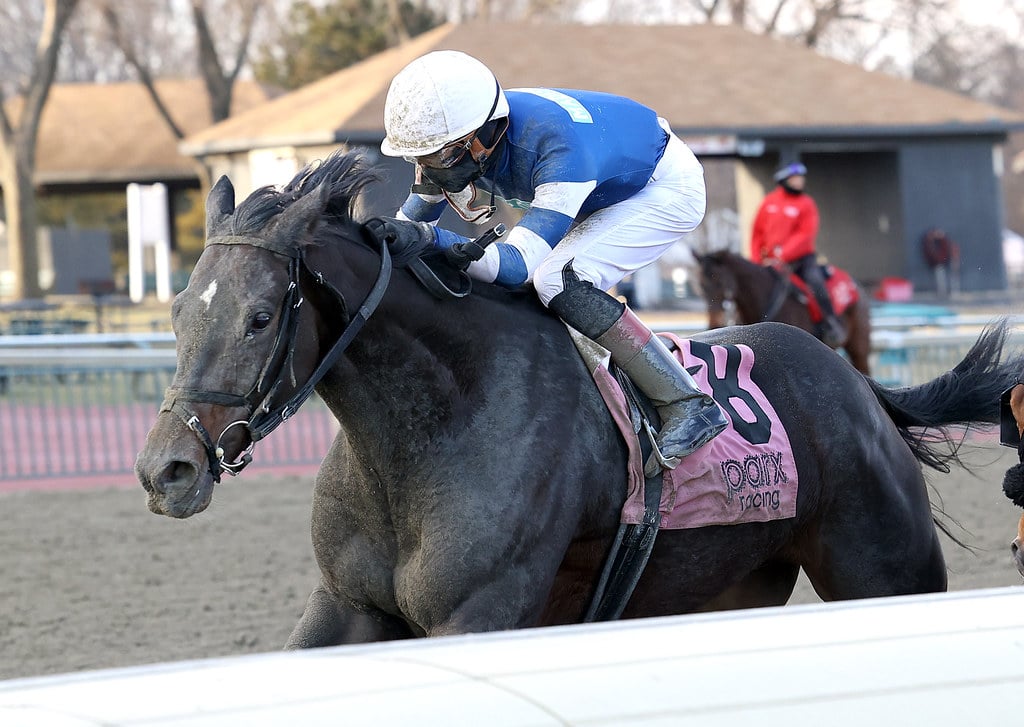[et_pb_section admin_label=”section”][et_pb_row admin_label=”Row”][et_pb_column type=”1_4″][et_pb_text admin_label=”Text” background_layout=”light” text_orientation=”left” use_border_color=”off” border_color=”#ffffff” border_style=”solid”]
![]()
[/et_pb_text][/et_pb_column][et_pb_column type=”3_4″][et_pb_text admin_label=”Major advertisers” background_layout=”light” text_orientation=”left” use_border_color=”off” border_color=”#ffffff” border_style=”solid” module_id=”Major advertisers”]
by Frank Vespe
With Governor Larry Hogan’s Budget Reconciliation and Financing Act (BRFA) headed to him for his signature, horse racing interests are hopeful that they have beaten back an attempt to transfer millions of dollars from racing purses to funding the operations of the Maryland Racing Commission.
The offending language was excised by amendment from the House version of the bill. And the conference committee to resolve differences between the two Houses’ versions of the bill maintained that removal.
“I said I was very confident after we had our hearings, and I’m very confident right now,” Alan Foreman, general counsel of the Maryland Thoroughbred Horsemen’s Association, said in an a March 23 interview. “I think we made a very compelling case to the legislature about how the Maryland racing industry is reinventing itself.”
[/et_pb_text][et_pb_text admin_label=”All advertisers” background_layout=”light” text_orientation=”left” use_border_color=”off” border_color=”#ffffff” border_style=”solid”]
With the state facing major budget shortfalls, BRFA is designed to help close that gap, and a handful of its proposals impact racing. One would have eliminated the startup funding the state had allocated last year for the rebirth of the Washington, DC International; another would have cut funds that were to be directed towards Maryland-bred runners in the Preakness.
But now it appears that the conference committee amendment will hold racing essentially harmless after all.
The industry’s biggest worry — one that led it to scrap an effort to to fund an equine medical director position widely perceived to be an important, positive step the industry should take — was the provision that would have allocated funds from the industry’s share of slots revenue to “pay all salaries and administrative expenses” of the state Racing Commission. In 2015, the Commission budget exceeded $2 million.
[/et_pb_text][et_pb_text admin_label=”Text” background_layout=”light” text_orientation=”left” use_border_color=”off” border_color=”#ffffff” border_style=”solid”]
[/et_pb_text][et_pb_text admin_label=”2nd part of story” background_layout=”light” text_orientation=”left” use_border_color=”off” border_color=”#ffffff” border_style=”solid”]
In the immediate term, a $2 to $3 million reduction could have led to a cut of 10-15 live racing days: roughly 10 percent of the total days run in Maryland annually.
Sal Sinatra, Maryland Jockey Club president, said that the ripple effects of such a cut would likely reverberate far beyond the reduction in days.
“It’s not a huge number, but you look at surrounding states, and once they get their hand in the cookie jar, they’re going to take more,” he said. “Especially in the breeding industry, it’s a few-year process. Those people are going to look in the future, and if the future doesn’t look strong, they’re going to go elsewhere.”
Exhibit A in such a doomsday scenario is Pennsylvania, where repeated legislative raids on the racing industry’s slots revenues have led to drastic drops in breeding activity. More than 1,500 foals were bred in Pennsylvania in 2009 and 2010, a number that dropped to just 668 in 2015 — even though the Keystone State has by far the largest state-bred program in the mid-Atlantic region.
Each house has now adopted the conference committee’s version of the bill; it now heads to Governor Hogan (R) for his signature.
And if the bill is signed, and racing is ultimately held harmless, folks in the industry will breathe a sigh of relief.
“Ultimately, if we’re successful… [it means that] we’ve accomplished delivering the message to Annapolis about the progress that we’ve made and the improvements we’ve made to the racing industry,” Foreman said.
[/et_pb_text][et_pb_text admin_label=”Minor advertisers” background_layout=”light” text_orientation=”left” use_border_color=”off” border_color=”#ffffff” border_style=”solid”]



